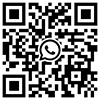Introduction
Firefighting is one of the most dangerous professions, requiring not only courage but also advanced protective gear to ensure responders’ safety. Among the innovations designed to protect firefighters, the Drag Rescue Device (DRD) integrated into modern firefighter suits stands out as a critical lifesaving tool. In this blog, we’ll explore what the DRD system is, how it works, and why it’s a game-changer for firefighter safety.
What is the DRD Rescue System?
The Drag Rescue Device (DRD) is a specialized safety feature embedded in high-performance firefighter turnout gear. It enables rapid extraction of an incapacitated firefighter from hazardous environments, such as burning buildings or collapsed structures. The system typically consists of reinforced handles, straps, or loops strategically integrated into the suit’s design, allowing fellow responders to quickly grab and pull the wearer to safety.
Key Features of the DRD System
1. Reinforced Rescue Handles
- Heavy-duty handles or loops are attached to the shoulders, upper back, or waist of the firefighter suit. These are made from heat-resistant, durable materials like Kevlar or high-strength webbing to withstand extreme conditions.
2. Quick-Release Compatibility
- The DRD is designed to work seamlessly with other rescue equipment, such as harnesses or ropes, ensuring compatibility during complex rescue operations.
3. Ergonomic Design
- Handles are positioned to distribute weight evenly, minimizing injury risk during extraction. This design prevents excessive pressure on the spine or limbs of the downed firefighter.
4. High Visibility
- Reflective strips or bright colors ensure the DRD components are easily identifiable in low-visibility environments filled with smoke or debris.
Why is the DRD System Critical for Firefighters?
1. Saves Precious Time
- In emergencies, every second counts. The DRD eliminates the need to fumble with improvised rescue methods, enabling swift extraction.
2. Reduces Risk to Rescuers
- Traditional rescue maneuvers often require multiple responders to lift or drag a downed colleague, increasing exposure to danger. The DRD allows a single rescuer to perform the evacuation efficiently.
3. Enhances Survivability
- Firefighters may become trapped due to structural collapses, flashovers, or loss of consciousness. The DRD ensures they can be pulled clear of immediate threats like flames or toxic gases.
4. Compliance with Safety Standards
- Modern DRD systems meet rigorous safety standards such as NFPA 1971 (Standard on Protective Ensembles for Structural Fire Fighting) and EN469(European standard for firefighter protective clothing).
How Does the DRD Work in Practice?
During training, firefighters learn protocols for using the DRD:
1. A rescuer identifies the incapacitated firefighter and locates the DRD handles.
2. The rescuer grips the handles, stabilizes the downed firefighter’s body, and begins dragging them to a safe zone.
3. The design ensures minimal physical strain on the rescuer while protecting the downed individual from abrasions or further injury.
Conclusion
The Drag Rescue Device (DRD) is more than just a feature on a firefighter’s suit—it’s a lifeline. By enabling rapid, safe extraction in life-threatening situations, the DRD embodies the fire service’s commitment to “everyone goes home.” As technology evolves, systems like the DRD will remain essential in safeguarding those who risk their lives to protect others.
Stay safe, stay prepared.
ATI-FIRE is dedicated to advancing firefighter safety through high-quality fire protection products. Follow our blog for the latest insights into protective gear and emergency response technologies.

 EN
EN
 AR
AR
 HI
HI
 JA
JA
 KO
KO
 NO
NO
 RU
RU
 CA
CA
 TL
TL
 IW
IW
 ID
ID
 SR
SR
 UK
UK
 VI
VI
 SQ
SQ
 GL
GL
 MT
MT
 TH
TH
 TR
TR
 FA
FA
 AF
AF
 MS
MS
 SW
SW
 CY
CY
 IS
IS
 MK
MK
 HY
HY
 AZ
AZ
 EU
EU
 KA
KA
 HT
HT
 UR
UR
 BN
BN
 LA
LA
 MN
MN
 NE
NE
 SO
SO
 MY
MY
 KK
KK
 UZ
UZ



